HIStalk Interviews Shane Adams, CEO, Sagacious Consultants
Shane Adams is Founder and CEO of Sagacious Consultants of Lenexa, KS.
Tell me about yourself and the company.
I have to start by giving Epic a lot of credit. It is where I met my wife, but also was the catalyst for starting my company, Sagacious Consultants. They do a lot of things exceptionally well. I wanted to take that and apply it to the consulting industry.
We focus on our culture and treating everyone like family. I don’t just say that because both of my brothers and my wife works with me, but we put our employees first and they put our clients first. In turn, both our employees and our clients are number one.
Epic has a strong reputation for its culture, which is geared around the demographic of employees they hire. Do you have to compete with that or can you take what you learned from Epic and extend it?
No, I don’t think we compete with that much. They obviously have a lot of great benefits. Some of the benefits we offer are extensions of what Epic offered. We took the things they did well and we tried to do even better. We took the things that maybe we didn’t think were the best for our culture and we flipped those and thought of some new things we could do.
What’s the secret to getting and keeping the best quality Epic certified and experienced people when everyone is looking for them?
We have a team of people that focuses on retention. I worked at Epic. My wife worked at Epic. Our first employees were friends of ours that worked at Epic. It’s really building a team of A players.
When we recruit people, they know we’re number one in KLAS and they know we have an amazing culture. They want to be a part of that. They want that work-life balance that we’re able to offer. Frankly, a lot of the other firms out there are just after making the difference between their bill rate and the rate they pay their consultants.
What does the Epic consulting market look like and how is it changing?
We see a lot of the market moving from simple staff augmentation to more strategic consulting services. With all the federal stimulus money over the past several years … that was money that was being thrown at these organizations to implement Epic and other EMRs as quickly as possible.
Now since some of that money is a little bit harder to obtain, organizations are using their own money. They need to see an ROI out of that. They’re now just trying to realize the benefits of an EMR system and squeeze out every dollar that they can. A lot more of our focus is moving from staff augmentation to realizing those benefits through efficiencies, through cost savings, and better use of the system.
Do you think Epic itself will run into a more mature market where the implementation work will taper off and optimization will be the most-demanded service?
I see two things happening. Domestically here within the US, I think the services for the clients already live on Epic will be more the maturing type of client for Epic. But there’s a big market for the smaller organizations, the ones where Epic is indirectly expending via their Connect model. We’ve been getting a lot of interest from smaller organizations who are looking to either partner with a bigger institution to obtain Epic or we’ve been working directly with an organization that has Epic to serve as a vendor themselves to extend to these smaller community hospitals their Epic solution.
The second part is overseas. There’s still not much market penetration for EMRs. I believe that’s where Epic’s major focus is going to be in the coming decade.
What’s the market pressure been on consulting rates over the last year or two?
I would say they’ve been fairly stable. There is definitely an influx of consultants, so there’s more supply there. But there is also an uptick in demand over the past couple years. Overall, we’ve seen rates stabilize and we think they’ll probably be in this spot for at least the foreseeable future.
Epic limits the consultant supply by who it certifies and by its non-compete agreements. Can they turn out enough supply to meet the demand?
I think they can. There has been an uptick in supply. Epic is getting bigger, therefore there’s more certified people. But there’s also some people with a little bit lower of a skill set who may be credentialed or just have experience. We’ve been seeing a lot of those people turning into consultants. Initially, those are putting downward pressure on the rates. But I believe over the past year or two, clients are starting to realize what it means to have somebody who has that industry knowledge and that Epic certification, that Epic experience.
Over the past couple years, KLAS has noticed that clients are now more interested in engaging with consulting firms that have that direct Epic experience, not just generalists out there. The consultant’s experience really does make a difference.
What’s your reaction to Epic going into consulting?
That’s been something I’ve talked with Epic about over the past several months. They’ve done it on and off over the past few years.
I believe Epic is most focused on the proliferation of their software. They’re most focused with getting Epic out in as many hands as possible. I like to think of it similar to the Google approach — getting the Android platform out to as many mobile phone users as possible. Because what they’re really interested in is their software and the licensing fees, just like Google is with their ad revenue.
Epic’s interest and our interests are very aligned. All we do is Epic, so we want Epic to remain the best EMR out there and that’s Epic’s same interest. If Epic were to jump into the consulting, I think it would be more of a partnership with firms like us than a direct competition.
They haven’t said why they’re doing it, but it sounds like one motivation is that they are losing people who quit, sit out their non-compete, and then make more money by going to work for a consulting company. Do you think that will limit your supply of quality candidates?
No, I don’t, for the simple fact of, if we were to just recruit half a percent of the people that leave Epic, we would still be growing like crazy. There are just so many people that have that experience that I don’t think that will limit our growth. I think that the people that are looking to leave Epic, it’s for a number of reasons. The majority of people do not leave Epic to become a consultant.
What do they do after they leave?
I would say the majority of people who leave Epic get into another industry. As you know, Epic hires most of their people directly out of college. They hire without discrimination towards a certain degree. The people who join Epic have various backgrounds.
Epic’s a great point to get your feet wet in the professional world and use it to launch a career into whatever you might decide to pursue, whether that’s going back to school to get your master’s degree or whether that’s going into another industry that might not be as highly paying. Now you’ve done some time at Epic and you were able to save up some money.
Consulting runs in cycles where the companies that rise to the top get bought. None of the Epic-only consulting companies that have sold to a big firm yet, right?
Not that I know of. The way that we’re trying to prepare ourselves is, we want to be agile, but we also have to be in the lean in the way we conduct business. Whether there’s pressure from competition, tightening up our budget and tightening up our processes, or there’s pressure from an industry level with rates going down or if Epic were to start losing some market shares.
We’re just concerned about continuing to offer relevant services to our clients, broadening out besides just staff augmentation, and looking to the future what our clients are going to need from a consulting partner three, five and ten years down the road.
You’ve said that you want to create a brand and not just a consulting company. How do you see that happening?
It starts in-house with the culture, with the people we recruit. We recently won Best in KLAS, but prior to that, we also were listed as one of the best places to work in healthcare. We focus on our employees, and making Sagacious a long-term career option for them and by making sure that everybody shares the same vision as Sagacious, which is to become that brand. It’s lining up our interests with our employees’ interests and our clients’ interests. It’s establishing that long-term partnership with our clients, and ensuring no matter what their need is when it comes to Epic — whether it’s staff augmentation, clinical optimization, AR reduction — we are the first vendor they call for support.
How do you see an Epic ecosystem building?
Epic announced that they were going to open up some of their software to outside developers. We see that eventually third-party players that are more so integrated with Epic may start becoming prevalent. We also see a second area is the adoption of the smaller organizations, under 500 beds, adopting Epic via the Connect relationship. We see services such as working with these organizations to increase revenue and decrease AR days. That’s a mix of not just optimizing Epic, but also optimizing their business processes and their operational work flows.
The same thing on the clinical side. Big data is a term similar to what cloud was two or three years ago. Big data is really about, now we have this data within Epic and these organizations have this data at their disposal, how are you going to leverage that to better patient care, better patient outcomes, and to increase your revenue so that you can provide patient care to the community? Those are the areas that we think will be where the industry is moving in the coming years.
How do you see analytics playing out for Epic customers?
We’re going to start seeing a lot more of revenue spent on analytics. The first stage of this EMR life cycle is adoption. We’ve seen that in the US, a lot of big institutions now are on an EMR such as Epic.
The second phase of that is leveraging the EMR to increase your bottom line and improve patient care. You can’t do that without analytics. We think as an industry that healthcare is far behind retail such as Amazon and Google. They are very far ahead when it comes to leveraging that data and using it for predictive ordering or predictive shipping, which Amazon might be getting into.
We think that the industry as whole has a long ways to go. We think that will be a big market for Epic and the other EMRs in the coming years.
What do you want the company to be in the next two to five years?
I see Sagacious transforming to more than simply staff augmentation and taking on more of those strategic-level partnerships with our clients. Going into organizations and assessing them from top to the bottom and seeing where there are inefficiencies. These are things that they may know about themselves, but there’s a lot of inertia when it comes to these projects. They’ve been doing things the same way they’ve been doing them for years. They might have gone live on Epic 10 years ago and taken some upgrades, but have they really leveraged the most they can out of that system?
We’re that outside driving force. We want to come in, provide them with an independent third-party assessment, and determine what are areas where they could strengthen themselves. What are those opportunities to drive patient care and drive their revenue metrics? That’s where I see Sagacious continuing to advance. I see our partners, our clients continuing to go down that path of optimization.
Do you have any concluding thoughts?
As an industry, a lot of people may think that we’re at the peak right now because so many organizations within the US have adopted an EMR and a lot of clients now are live on Epic. But the truth is, that’s just one piece of the overall business cycle. Adoption is just the beginning of it. Next is leveraging the data analytics to optimize. Then, finally, it’s using that data to predict patient outcomes and to make business decisions to drive revenue.
That’s what I’m most excited about. That’s what we’re most excited about at Sagacious — continuing to partner with our clients and figure out where the future is and help them set some long-term goals to take it to the next stage.








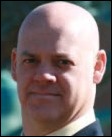

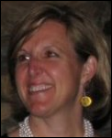
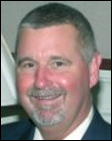


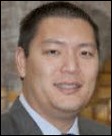
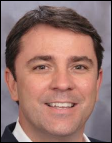



RE: Change HC/RansomHub, now that the data is for sale, what is the federal govt. or DOD doing to protect…